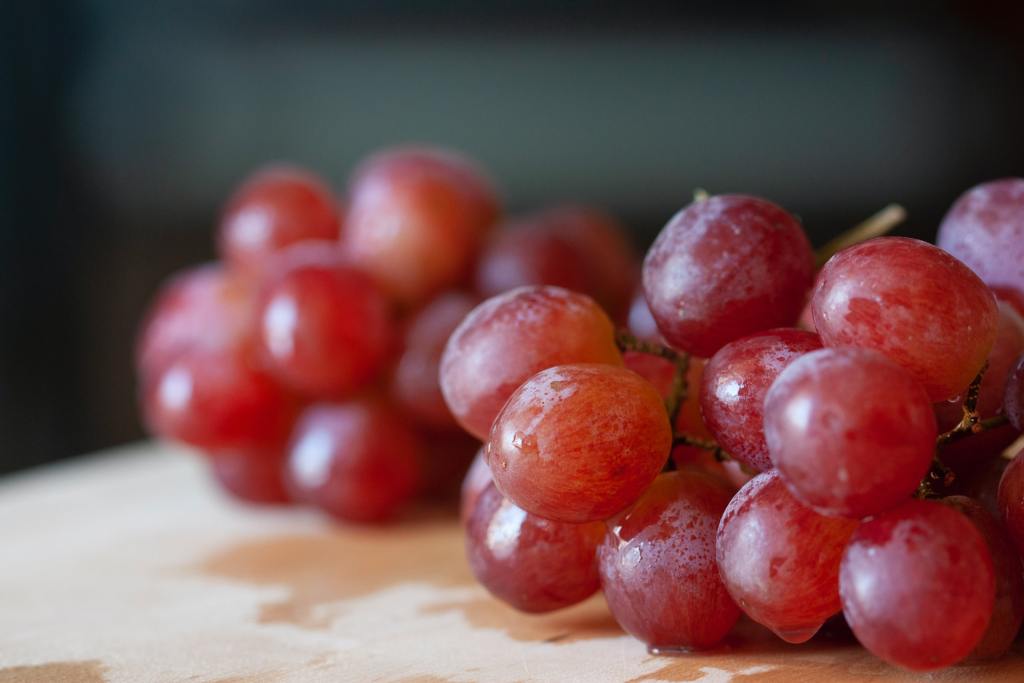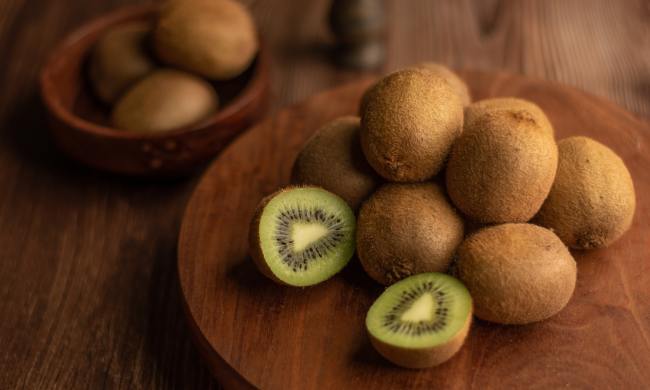Grapes are a versatile and readily available fruit that pairs well with other fruits, nuts, and cheeses. They’re delicious and juicy, but only when they’re fresh. Unfortunately, grapes are typically sold in large bunches, and they often start to go bad before you can eat them all! You may already know how to keep produce fresh for weeks in your refrigerator, but you might not know how to store grapes in the fridge properly. Follow these tips to keep your grapes crisp and tasty for as long as possible.

Cleaning and preparing your grapes
The first step to storing your grapes is to prepare them. Here's what to do:
Step 1: Store grapes unwashed.
Washing fruits and vegetables, especially those with thinner skins, strips them of some of their protective layers and makes them more prone to spoiling. Don’t wash your grapes until you’re ready to eat them.
Step 2: Wash grapes with plain, cold water when you're ready eat them.
Rub them gently with your hands to avoid damaging the skin, and don’t use any chemical soaps or bleach. Chemicals can soak into the skin of the grape, making them inedible.
Step 3: Check the bunches of grapes carefully for any bad ones.
If you find bad grapes, remove them immediately! You can toss them or compost them if you’d like.
Step 4: Separate larger bunches of grapes into smaller groups for storage by cutting or tearing the stems apart.
This makes them easier to store, and it also increases air circulation. Air circulation reduces the chances of mold and disease while increasing shelf life.

The best ways to store your grapes
The easiest way to store grapes is to place them, unwashed, into a ventilated container and put them in your refrigerator. They can last for just over a week this way, but there are some ways to improve that. Storing your grapes in the back of the fridge or in the crisper drawer, where the air is colder, can go a long way to help.
The best way to store them, however, is to freeze them! They can last much longer this way and are still quite versatile. Frozen grapes can make excellent ice cubes for a fun, fruity cool down, and they can also be added to fruit salads or eaten as snacks. Freezing and thawing fruit can change its texture, so it's best to use them while they're still frozen.
If you have access to a food dehydrator, you can also store grapes by turning them into raisins. Fresh grapes and fresh raisins are not exactly the same thing, but raisins do last a lot longer than grapes. The downside, of course, is that you can’t rehydrate a raisin into a grape.

Do grapes last longer if stored on the stem?
Short answer: Yes. Grapes spoil faster once they’re plucked off the stem. This is because removing the stem leaves a hole in the grape's skin. Here's how to make sure your grapes are fresh:
Step 1: Only remove them from the stem once you’re ready to eat them.
Step 2: Make sure the stems are still firm, not mushy.
Step 3: Purchase grapes when they are in season, which is during the fall.
The fresher you buy them, the longer they’ll last.

How to tell if your grapes are still fresh
No matter how you store them, your grapes will eventually go bad. Here are a few signs to be on the lookout for so that you can catch them right as they’re turning:
Step 1: Keep an eye out for any discoloration.
Brown or black bruises on your grapes may be a sign that your grapes are going bad. Grapes have a very thin skin, so bruises can also be caused by friction or torn skin. If you notice discoloration, keep an eye out for other signs.
Step 2: Check the texture of your grapes.
The ideal texture of a grape is firm but with a little give, with the exception of frozen grapes. If your grapes are very firm, they aren’t quite ripe yet, and if your grapes are mushy, they’re overripe. Texture is often the most reliable way to tell how fresh a grape is — when in doubt, give it a squish!
Step 3: Smell your grapes.
If they start smelling bad, there is a good chance they’re going bad. Something important to note, though, is that, due to their thin skins, grapes can sometimes absorb smells.
If you store your grapes near strong-smelling vegetables like onions, garlic, or peppers, your grapes might begin to smell like them. In that case, smell isn’t the most reliable way to gauge freshness, and you should default back to texture.

What is the best container to store grapes in?
The best container to store your grapes in is the box or bag they came in, or another container with ventilation holes. Although you store most foods in sealed containers, there's a reason that boxes or bags of grapes have holes in them.
The high moisture content of fresh grapes means that sealed containers lead to a build up of humidity, which causes your grapes to spoil faster. Having holes in the container allows air to pass through, keeping your grapes nice and dry!

How long can you expect grapes to last?
Generally, you can expect grapes to last one week if you just leave them in the refrigerator. But if you buy your grapes fairly fresh, you can expect freshness for around two weeks in the fridge. In the freezer, grapes can retain their flavor for up to a year.
On the flip side, your grapes will have a much shorter lifespan on the counter at room temperature. When grapes are simply left out, they won't last much longer than two to four days. Again, these are just general numbers, and it's a good idea to smell and feel your grapes to see if anything about them seems off.
Now that you know how to store grapes in the fridge, you can have perfectly fresh grapes wherever you please! Carefully stored grapes can last twice as long as they otherwise would, or longer if they’re frozen. Just remember to keep an eye on their color, texture, and smell, and store them somewhere cold. Enjoy your nice, fresh grapes!




